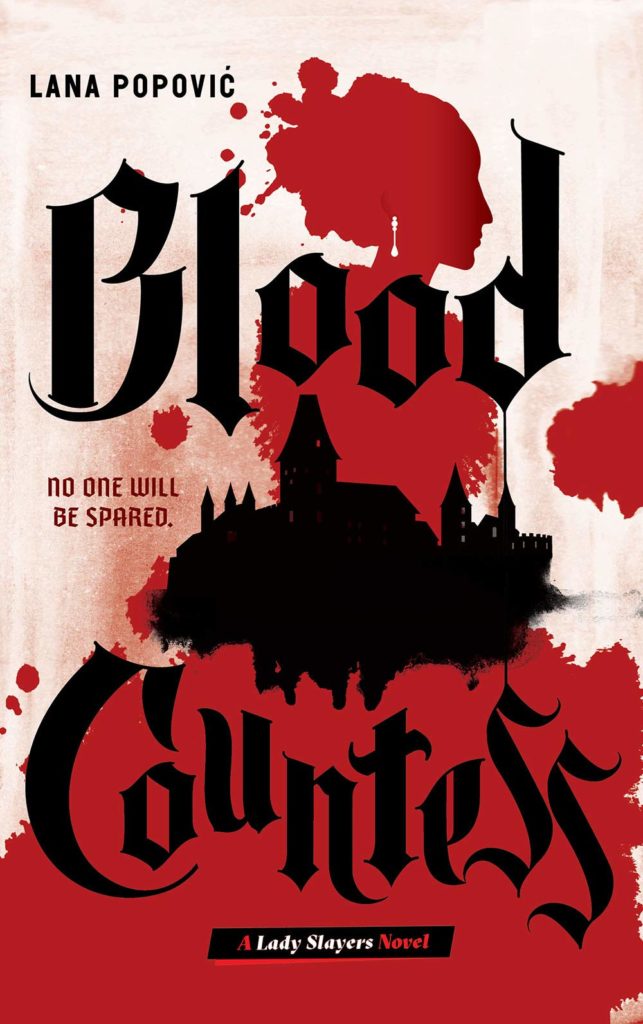I have been anticipating Blood Countess since I found out about it. Amulet was so kind to send me an early copy and make my dreams come true. I’ve always been fascinated by Elizabeth Bathory. As a teen, I had only really heard about these infamous men and Elizabeth seemed like an anomaly to my classes.
Summary
In 17th century Hungary, Anna Darvulia has just begun working as a scullery maid for the young and glamorous Countess Elizabeth Báthory. When Elizabeth takes a liking to Anna, she’s vaulted to the dream role of chambermaid, a far cry from the filthy servants’ quarters below. She receives wages generous enough to provide for her family, and the Countess begins to groom Anna as her friend and confidante.
It’s not long before Anna falls completely under the Countess’s spell—and the Countess takes full advantage. Isolated from her former friends, family, and fiancé, Anna realizes she’s not a friend but a prisoner of the increasingly cruel Elizabeth. Then come the murders, and Anna knows it’s only a matter of time before the Blood Countess turns on her, too.
Review

(Disclaimer: I received this book from the publisher. This has not impacted my review which is unbiased and honest.)
TW: Domestic abuse
Blood Countess is enigmatic. Beginning with the picture of a woman married to an abusive man, Blood Countess immediately sets the scene of the ways women are seen and abused by men. Not all men, but we are shown the power struggles of women, whether it be because they need their beauty to maintain their allure to men – and thus their financial stability – Blood Countess is a story about power, obsession, and freedom.
Popović illustrates this choice clearly from the beginning as Anna is stuck between her father’s exploitation and the possibility of a marriage she doesn’t desire. Within Blood Countess we see not only a queer relationship in a picture of patriarchy (f/f relationship), but also the manipulation of toxic relationships. It’s a book that asks us about who we are as people, complex, flawed, and sometimes not deserving of forgiveness.
A question throughout the book that never leaves our mind, or Anna’s, is from where does cruelty stem? But Blood Countess doesn’t offer us any answers. There can be an internal source that, when fostered, runs rampant. Are our impulses and desires present from the beginning? Something that lies in our blood? It’s a question that has intrigued psychologists and society for years.
While you may be more familiar with Elizabeth’s murders, the main character of the story is Anna. Afraid for her life, struck in this web of complicity, Anna has to figure out how she can both maintain her own life and mitigate Elizabeth’s blood lust. Is it even possible? With gratitude comes the fear of a benefactor leaving. The remembrance of the cold and hunger in your stomach. When we are the witness, the ones who are left standing, what toll does that enact on our mind and our heart? Our hands which remain bloody by association. How do we hold back a flood of destruction and death?
Overall,
Blood Countess is a book that may have an ending you recognize, but Anna’s journey is the true gem. It’s like we watch the descent into an emotionally manipulative relationship of whimsy, love, and obsession. Put into the perspective of Anna, for whom money, and the lack of it, forces us into cages, we are able to witness it from the outside. Find Blood Countess on Goodreads, Amazon, Indiebound & The Book Depository.